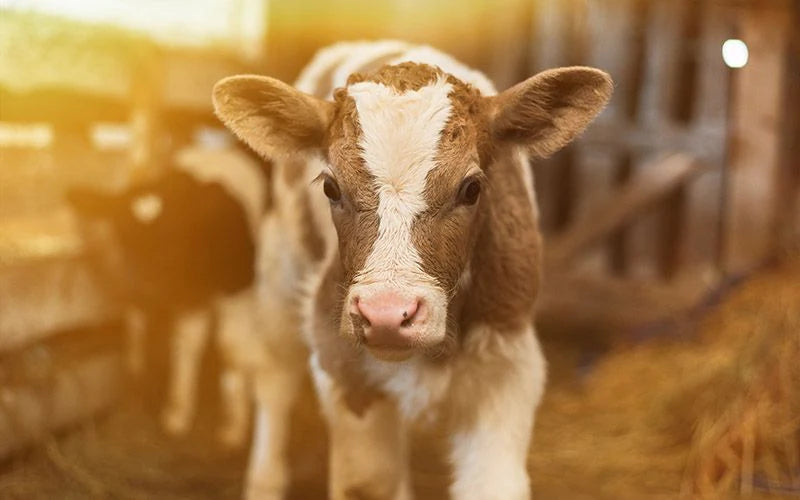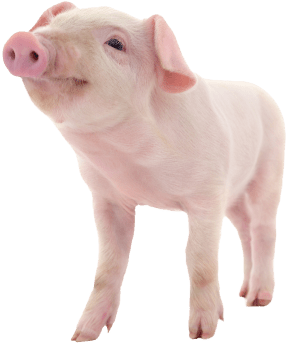
Mastering the Art of Newborn Animal Care on Small Farms
|
|
Time to read 5 min
 You are being redirected to QC Supply Pharmacy, where you’ll find a wide selection of high-quality prescription and pharmaceutical products for animals of all sizes.
Enjoy the same great service and expertise you trust from QC Supply.
Click below to continue shopping.
Continue
No thanks, stay on the main site
Powered by
You are being redirected to QC Supply Pharmacy, where you’ll find a wide selection of high-quality prescription and pharmaceutical products for animals of all sizes.
Enjoy the same great service and expertise you trust from QC Supply.
Click below to continue shopping.
Continue
No thanks, stay on the main site
Powered by


|
|
Time to read 5 min
The prospect of newborn animal care on your small farm or homestead can be both joyous and intimidating, especially for the first-timer. Whatever the animal, making sure your birthing pen setup and supplies are ready to go is important, sometimes even critical. Giving birth is stressful for any mother, all newborns are vulnerable, and both may need your assistance. With a little preparation, you can mitigate mortalities and help ensure your livestock birthing preparation goes smoothly and your newborn livestock grows into healthy animals.
About two weeks before the due date, move your animal to the birthing pen setup and do not move her again. This will allow the expectant mother time to adjust to life apart from the herd, and enough time to become acquainted with her new surroundings.
A clean and dry pen is always the way to go. Make sure to have a healthy supply of bedding available. You will want plenty of warm bedding, especially after delivery. Straw or hay is preferable to sawdust which can be an eye, nose, and umbilical irritant.
While most animals will get the necessary warmth they'll need from the mother, in cold months especially, it’s smart to have a heat lamp for newborn livestock . Affix the lamp about 24 inches from all materials; particularly dry bedding and old paneling.
As with any expectant mother, try to keep noise and general hubbub to a minimum, you want a relaxed mom for the big job ahead.
Birth, of course, begins with the mother. Making sure your females are in tip-top condition, particularly in the last trimester, will help provide them with the energy necessary for delivery. A quality feed with the correct nutritional balance will be important. A little species-appropriate research into the nutritional needs of your animals will help result in trouble-free deliveries and healthy offspring.
For the first six months of pregnancy, the mother's dietary needs shouldn't differ too much from her typical diet. However, the last trimester is months of enormous fetal growth. For instance, about 70% of a calf's care tips involve proper nutrition, as most of its growth occurs in the last trimester. This huge growth is powered by mom and is a significant drain on her body.
After delivery, an underweight mother may have trouble lactating and the caloric demands of nursing can cause more weight loss, putting both the mother and her offspring at risk. Overweight animals may also have difficulty producing milk, and excess fat deposits may line the birth canal, increasing the chances of difficult deliveries.
Up-to-date vaccinations are also important. Make sure your animals have had their necessary shots or get them boosters a month or more before delivery. Vaccinations help ensure that the mother passes essential immunities to her offspring through her colostrum.
The first hours after delivery are a critical time for the offspring. Helping mother and baby bond will increase the chance the baby will consume colostrum importance in livestock or first milk. The benefits of colostrum are essential to the future health of your animals.
Colostrum protects the baby by revving its immune system with herd-specific antibodies. Proper nutrition for pregnant livestock ensures that the mother can produce high-quality colostrum. Colostrum provides passive immunities directly through the intestine; the only time in the life of the animal this occurs. These passive immunities are not provided through vaccination, the environment, or by any other source. It can be difficult for animals to live healthy lives without the immunities contained in colostrum.
After delivery, if the newborn seems to be taking too long to latch, milk the mother by hand and feed the baby from a bottle. Keep an eye open for chunky, flakey, or bloody milk. If the mother has mastitis, she will not provide adequate colostrum. Do not feed inadequate colostrum to a baby. Instead, have frozen or replacement colostrum on hand.
In the case of multiple births, where there may not be enough colostrum for all, or even if a mother can nurse normally, some small or weak animals may need assistance (particularly piglets) if they are unable to fight their way to food.
Make sure you have additional colostrum, either frozen or replacer on hand in your birth kit (more on this later). Colostrum importance in livestock cannot be overstated, and colostrum replacers are species-specific; different animals have different nutritional needs. Closely follow the directions on the container when preparing.
If the mother dies during or soon after birth, or illness or multiple births occur, you may need to use a milk replacer instead of mother's milk. Multi-species milk replacer exists, but be sure to follow the preparation instructions specific to your animal. Overfeeding is a risk if feeding by bottle and this can lead to a variety of ailments, including scours.
If your newborn does get scours or has diarrhea from overfeeding, it will be important to replace lost electrolytes. Find a species-specific electrolyte product and follow the directions closely. Keep up with the milk replacer, but make sure to feed electrolytes separately.
Unless you plan to call the vet in for every delivery, you will often be managing on your own. Have a livestock birth kit essentials assembled well in advance of the delivery. A birth kit is just that: a kit that includes all the things you'll need during and after birth. A plastic tool or tackle box makes for a great kit container.
A typical birth kit includes
Aside from the iodine and tags, hopefully, you won't have to use any of it, but you'll be happy to have it when it matters rather than having to run back to the house for something you forgot.
Most deliveries come off without a hitch, but there is always the chance of the baby being in an abnormal position or other unforeseen problems. The likelihood of a fatality is greatly reduced if you keep an eye on things. If a problem does occur, you are far better off spotting it early on and can then make a reasonable determination if you need to call the vet. Last-minute decisions made in a panic do not make for optimal results.
As with most things, being prepared for eventualities well in advance is a wise move, particularly if you are new to managing livestock during birthing season . When the lives of your animals are at stake, knowing what to expect, having the right tools on hand, and a plan in case of emergencies, should help ensure your animals get off to the healthy start they deserve.
Do you have any livestock birthing preparation tips, tricks, or just a good story? Drop a comment below & let us know!

